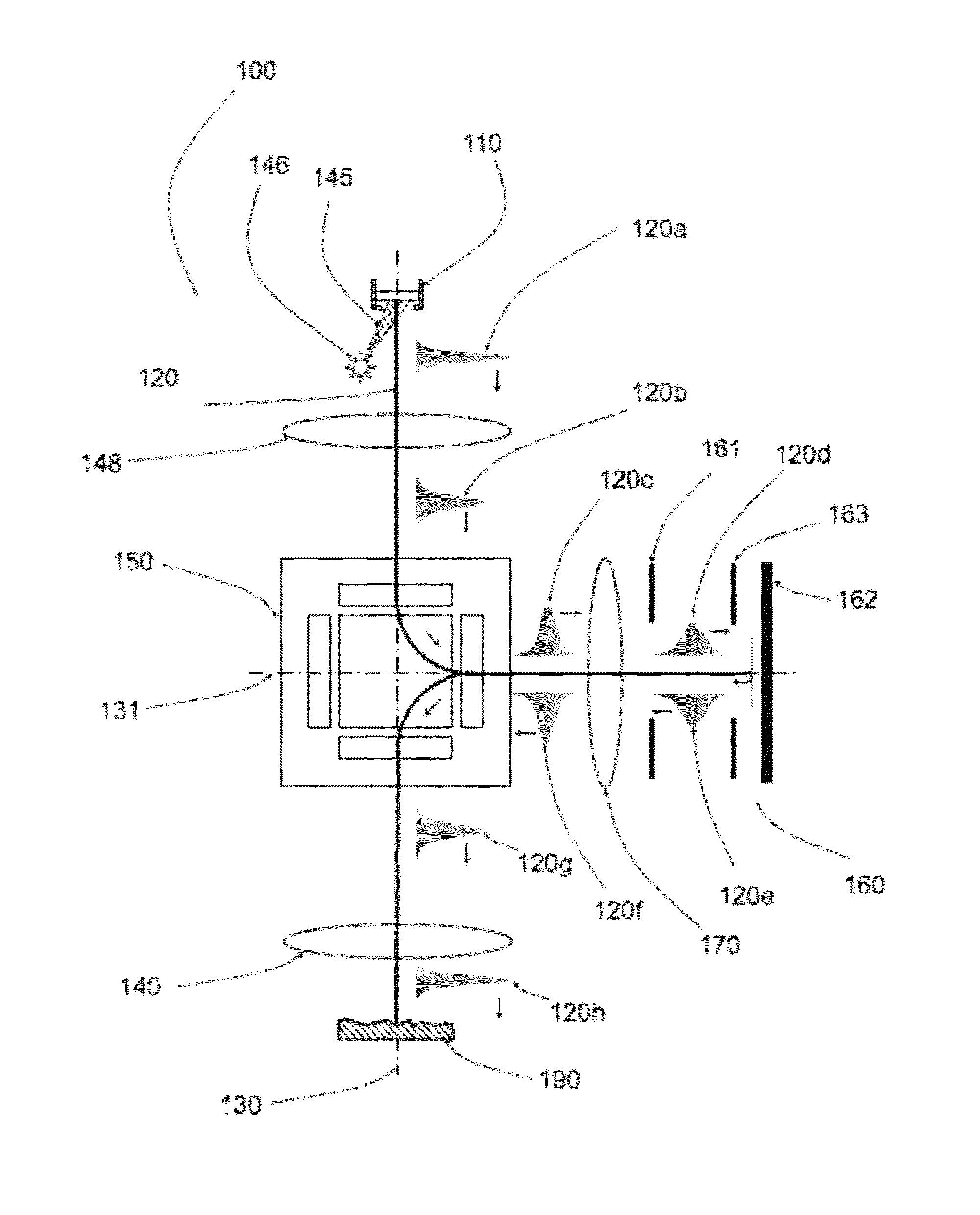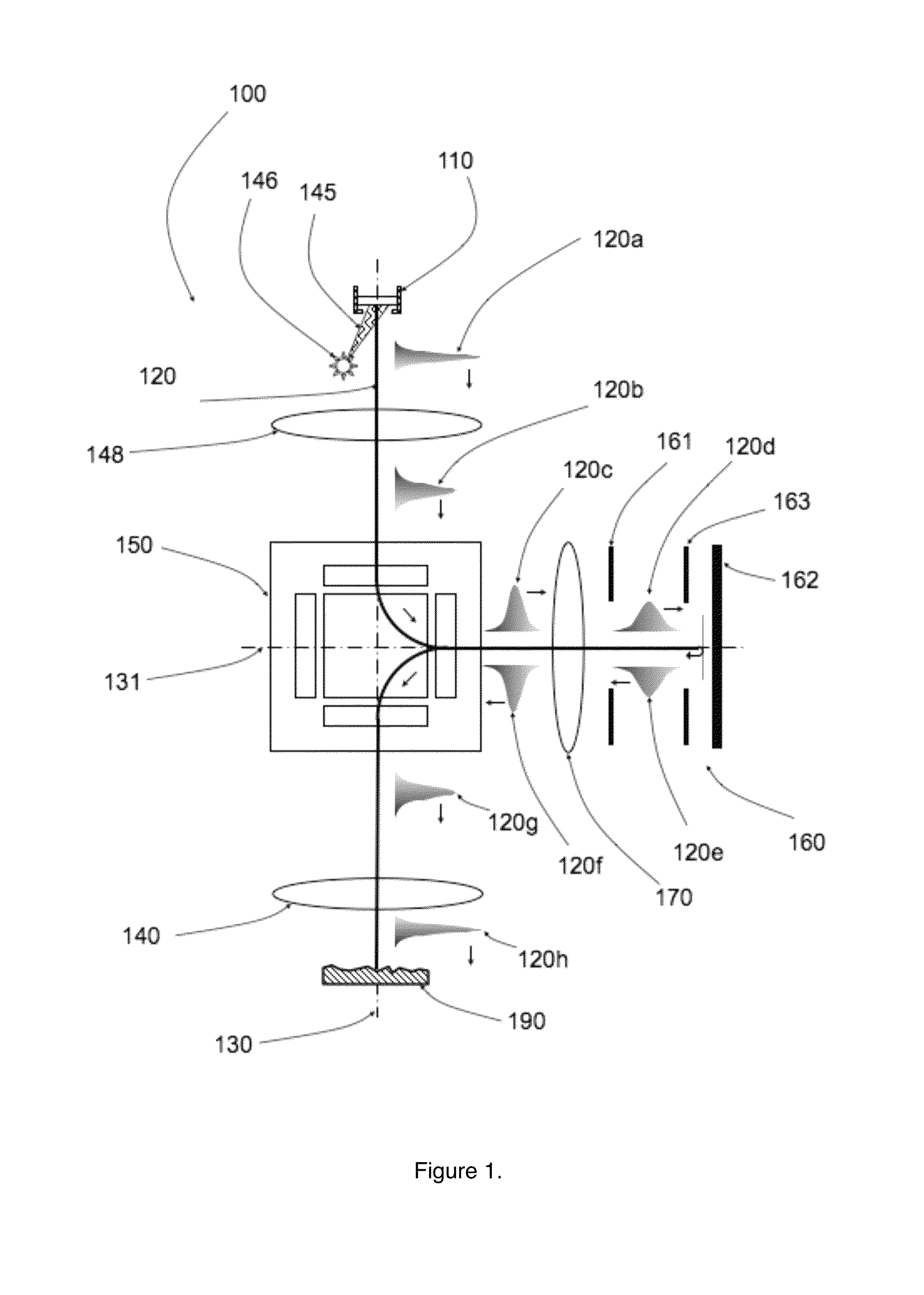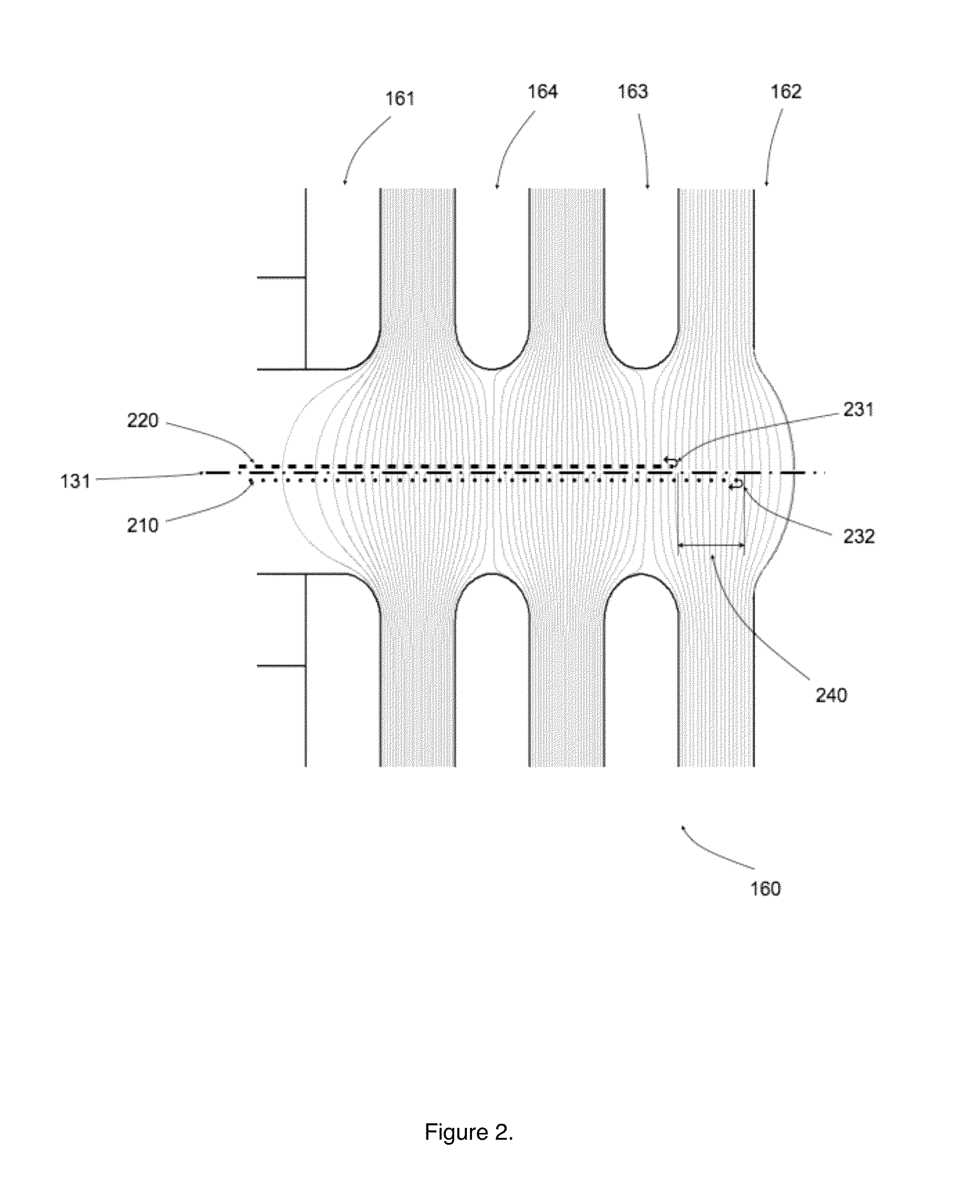Mirror pulse compressor for electron beam apparatus
- Summary
- Abstract
- Description
- Claims
- Application Information
AI Technical Summary
Benefits of technology
Problems solved by technology
Method used
Image
Examples
Embodiment Construction
Electron Mirror-Based Pulse Compressor
[0021]FIG. 1 is a diagram depicting a structure for an electron beam apparatus 100 comprising a magnetic prism separator and an electron mirror that are configured as an electron pulse compressor. In this apparatus 100, an electron emitter 110 generates an ultrashort pulse of primary electrons 120a along the vertical optical axis 130 defined by the objective lens 140. The duration of an ultrafast pulse is typically less than 1 picosecond. In one implementation, the electron emitter 110 is a photocathode and the ultrafast pulse of electrons is generated by illuminating the photocathode with photons 145 generated by a pulsed laser 146. One or more condenser lenses 148 collimate the primary electron pulse into the magnetic prism separator 150, a deflection element composed of an array of uniform magnetic fields of different length and strength so as to provide a mechanism for simultaneous deflection and stigmatic focusing. An optimized prism separa...
PUM
 Login to View More
Login to View More Abstract
Description
Claims
Application Information
 Login to View More
Login to View More - R&D
- Intellectual Property
- Life Sciences
- Materials
- Tech Scout
- Unparalleled Data Quality
- Higher Quality Content
- 60% Fewer Hallucinations
Browse by: Latest US Patents, China's latest patents, Technical Efficacy Thesaurus, Application Domain, Technology Topic, Popular Technical Reports.
© 2025 PatSnap. All rights reserved.Legal|Privacy policy|Modern Slavery Act Transparency Statement|Sitemap|About US| Contact US: help@patsnap.com



